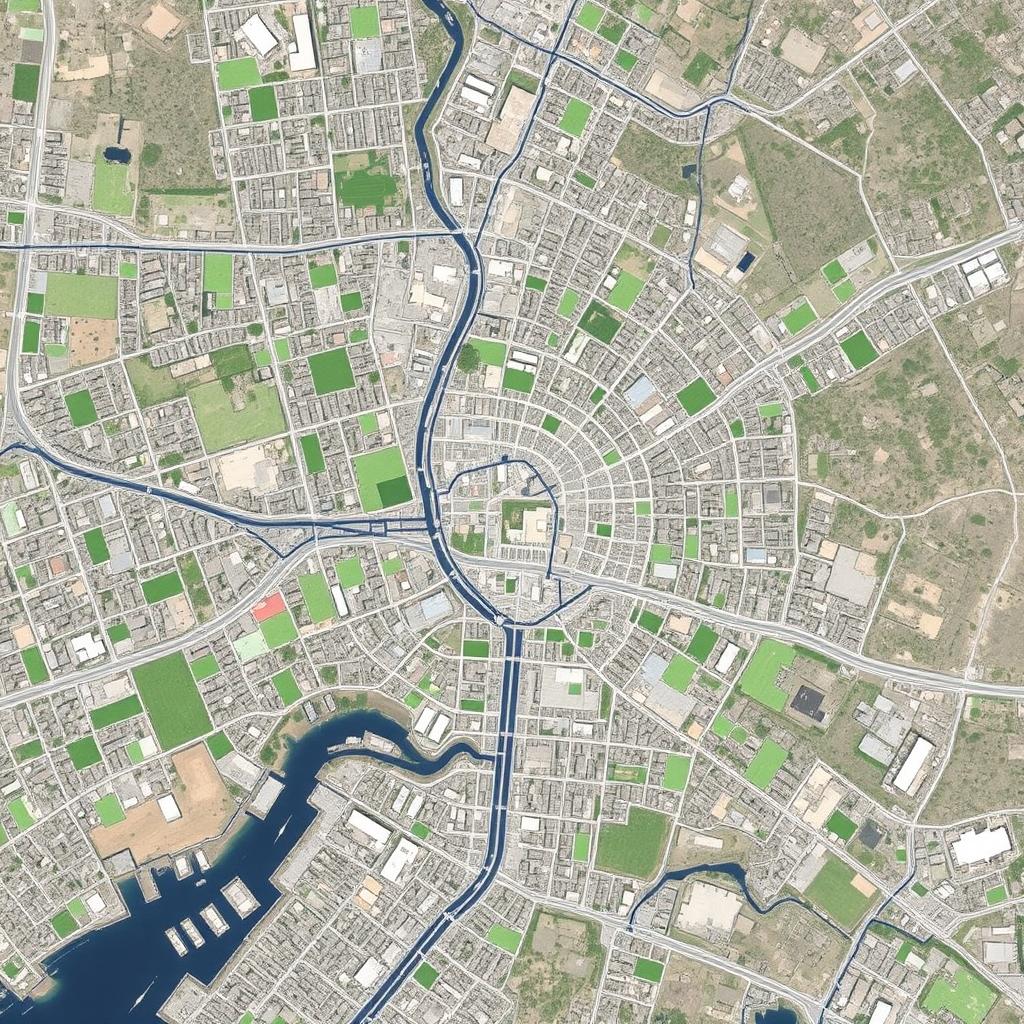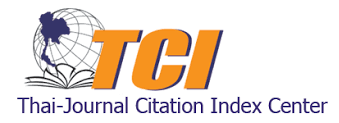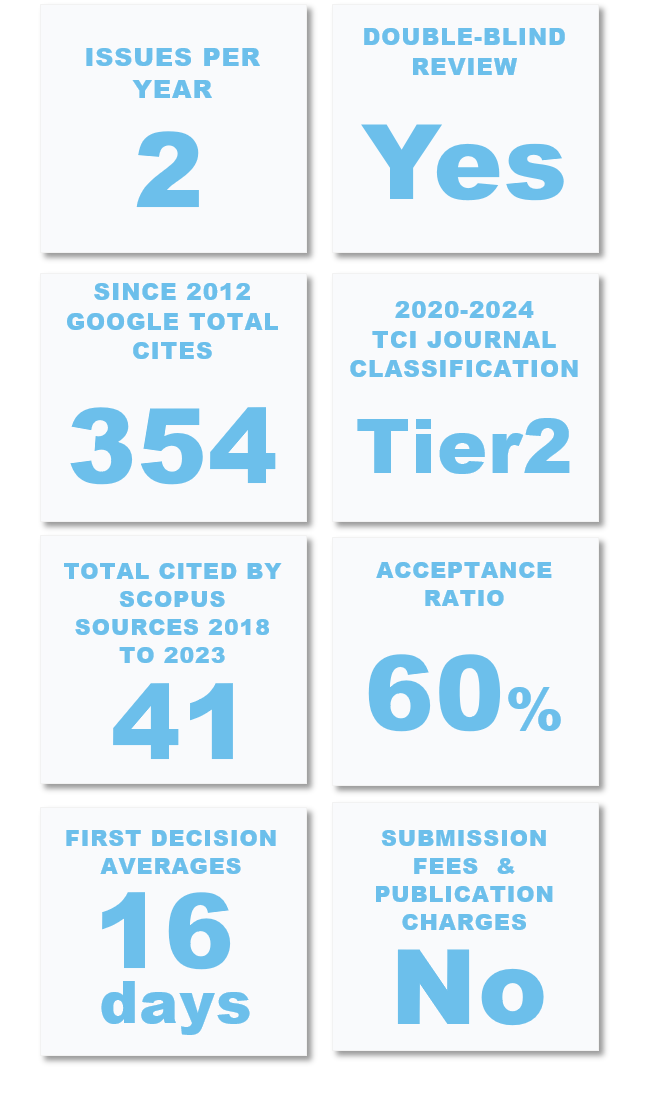Reviews on the Land Use and Land Cover Changes in Bangkok
DOI:
https://doi.org/10.56261/built.v22.252537Keywords:
land use and cover, Remote-sensing, Land and Buildings Tax Act, BangkokAbstract
Remote sensing has been a highly effective and efficient method for spatial and socio-political analyses for several decades. It utilizes satellite images to map land use and land cover (LULC) and detect changes in this regard. One of Southeast Asia’s megacities, Bangkok has undergone significant land use dynamics and related socioeconomic activity changes. Recently, the new Land and Buildings Tax Act B.E. 2562 (A.D. 2019) has been implemented, which could impact land-use changes, particularly in vacant lands. This study aims to review the literature on LULC changes in Bangkok since the implementation of the land tax and to provide a summary of the main findings. The reviews indicate that previous literature on LULC in Bangkok has primarily focused on environmental or spatial factors, rather than socio-economic ones. This highlights a gap in our understanding of the socio-economic and LULC impacts of land taxation.
Downloads
References
Adulkongkaew, T., Satapanajaru, T., Charoenhirunyingyos, S., & Singhirunnusorn, W. (2020). Effect of land cover composition and building configuration on land surface temperature in an urban-sprawl city, a case study in Bangkok metropolitan area, Thailand. Heliyon, 6(8). https://doi.org/10.1016/j.heliyon.2020.e04485 DOI: https://doi.org/10.1016/j.heliyon.2020.e04485
Ali, G., Pumijumnong, N., & Cui, S. (2018). Valuation and validation of carbon sources and sinks through land cover/use change analysis: The case of Bangkok metropolitan area. Land Use Policy, 70, 471–478. https://doi.org/10.1016/j.landusepol.2017.11.003 DOI: https://doi.org/10.1016/j.landusepol.2017.11.003
Bonafoni, S., & Keeratikasikorn, C. (2018). Land surface temperature and urban density: Multiyear modeling and relationship analysis using Modis and Landsat Data. Remote Sensing, 10(9), 1471. https://doi.org/10.3390/rs10091471 DOI: https://doi.org/10.3390/rs10091471
Chalermpong, S., Thaithatkul, P., Anuchitchanchai, O., & Sanghatawatana, P. (2021). Land use regression modeling for fine particulate matters in Bangkok, Thailand, using time-variant predictors: Effects of seasonal factors, open biomass burning, and traffic-related factors. Atmospheric Environment, 246, 118128. https://doi.org/10.1016/j.atmosenv.2020.118128 DOI: https://doi.org/10.1016/j.atmosenv.2020.118128
Chayapong, P. (2010). Spatial analysis of urban heat island phenomenon and its relationship with land use and land cover and eletrical energy consumption: A case study in Bangkok metropolitan area [Doctoral dissertation, School of Remote sensing Institute of Science]. Suranaree University of Technology Intellectual Repository.
Chayapong, P., & Dasananda, S. (2013). Urban heat island phenomenon in relation to land use/land cover in Bangkok metropolitan administration area. Applied Environmental Research, 35(1), 27–41. https://ph01.tci-thaijo.org/index.php/aer/article/view/9751
Du, H., Cai, W., Xu, Y., Wang, Z., Wang, Y., & Cai, Y. (2017). Quantifying the cool island effects of urban green spaces using remote sensing data. Urban Forestry & Urban Greening, 27, 24-31. https://doi.org/10.1016/j.ufug.2017.06.008 DOI: https://doi.org/10.1016/j.ufug.2017.06.008
Estoque, R. C., Murayama, Y., & Myint, S. W. (2017). Effects of landscape composition and pattern on land surface temperature: An urban heat island study in the megacities of Southeast Asia. Science of Total Environment, 577, 349-359. https://doi.org/10.1016/j.scitotenv.2016.10.195 DOI: https://doi.org/10.1016/j.scitotenv.2016.10.195
Hara, Y., Takeuchi, K., & Okubo, S. (2005). Urbanization linked with Past Agricultural Landuse patterns in the urban fringe of a deltaic Asian mega-city: A case study in Bangkok. Landscape and Urban Planning, 73(1), 16–28. https://doi.org/10.1016/j.landurbplan.2004.07.002 DOI: https://doi.org/10.1016/j.landurbplan.2004.07.002
Iamtrakul, P., Padon, A., & Chayphong, S. (2024). Quantifying the impact of urban growth on Urban Surface Heat Islands in the Bangkok Metropolitan Region, Thailand. Atmosphere, 15(1), 100. https://doi.org/10.3390/atmos15010100 DOI: https://doi.org/10.3390/atmos15010100
Iamtrakul, P., Padon, A., & Klaylee, J. (2022). Analysis of urban sprawl and growth pattern using geospatial technologies in megacity, Bangkok, Thailand. Geoinformatics and Data Analysis, 109–123. https://doi.org/10.1007/978-3-031-08017-3_10 DOI: https://doi.org/10.1007/978-3-031-08017-3_10
Itiritiphan, F., Wu, F., Gantumur, B., & Lkhagva, O. (2020). Analysis of urban green spaces and surface temperature using quantitative remote sensing technology in Bangkok. Remote Sensing Technologies and Applications in Urban Environments V. https://doi.org/10.1117/12.2573921 DOI: https://doi.org/10.1117/12.2573921
Kamal, N., Imran, M., & Tripati, N. K. (2017). Greening the urban environment using geospatial techniques, a case study of Bangkok, Thailand. Procedia Environmental Sciences, 37, 141–152. https://doi.org/10.1016/j.proenv.2017.03.030 DOI: https://doi.org/10.1016/j.proenv.2017.03.030
Khamchiangta, D., & Dhakal, S. (2020). Time series analysis of land use and land cover changes related to urban heat island intensity: Case of Bangkok metropolitan area in Thailand. Journal of Urban Management, 9(4), 383–395. https://doi.org/10.1016/j.jum.2020.09.001 DOI: https://doi.org/10.1016/j.jum.2020.09.001
Khamchiangta, D., & Dhakal, S. (2021). Future urban expansion and local climate zone changes in relation to land surface temperature: Case of Bangkok metropolitan administration, Thailand. Urban Climate, 37, 100835. https://doi.org/10.1016/j.uclim.2021.100835 DOI: https://doi.org/10.1016/j.uclim.2021.100835
Limteerakul, V. (2021). Inequality in household real estate ownership and the effect of property taxes on income inequality in Thailand. Economics and Public Policy Journal, 12(23), 55–77. Retrieved March 23, 2022, from https://so01.tci-thaijo.org/index.php/econswu/article/view/254916/169964
Losiri, C., Nagai, M., Ninsawat, S., & Shrestha, R. (2016). Modeling urban expansion in Bangkok metropolitan region using demographic–economic data through cellular automata-markov chain and Multi-Layer Perceptron-Markov chain models. Sustainability, 8(7), 686. https://doi.org/10.3390/su8070686 DOI: https://doi.org/10.3390/su8070686
Madhavan, B. B., Kubo, S., Kurisaki, N., & Sivakumar, T. V. (2001). Appraising the anatomy and spatial growth of the Bangkok metropolitan area using a vegetation-impervious-soil model through remote sensing. International Journal of Remote Sensing, 22(5), 789–806. https://doi.org/10.1080/01431160051060200 DOI: https://doi.org/10.1080/01431160051060200
Murakami, A., Medrial Zain, A., Takeuchi, K., Tsunekawa, A., & Yokota, S. (2005). Trends in urbanization and patterns of land use in the Asian Mega Cities Jakarta, Bangkok, and Metro Manila. Landscape and Urban Planning, 70(3-4), 251–259. https://doi.org/10.1016/j.landurbplan.2003.10.021 DOI: https://doi.org/10.1016/j.landurbplan.2003.10.021
Murayama, Y., Estoque, R. C., Subasinghe, S., Hou, H., & Gong, H. (2015). Land-Use/Land-Cover changes in major Asian and African cities. Annual report on the multi use social and economic and data bank, 92, 1–42. Retrieved April 19, 2022, from https://www.researchgate.net/profile/Yuji-Murayama/publication/274712830_Land-useland-cover_changes_in_major_Asian_and_African_cities/links/55c93e4008aea2d9bdc927fc/Land-use-land-cover-changes-in-major-Asian-and-African-cities.pdf.
Nguyen, C. T., Nguyen, D. T., & Phan, D. K. (2020). Factors affecting urban electricity consumption: A case study in the Bangkok metropolitan area using an integrated approach of earth observation data and data analysis. Environmental Science and Pollution Research, 28(10), 12056–12066. https://doi.org/10.1007/s11356-020-09157-6 DOI: https://doi.org/10.1007/s11356-020-09157-6
Nguyen, C. T., Nguyen, H., & Sakti, A. D. (2024). Seasonal characteristics of outdoor thermal comfort and residential electricity consumption: A Snapshot in Bangkok metropolitan area. Remote Sensing Applications: Society and Environment, 33, 101106. https://doi.org/10.1016/j.rsase.2023.101106 DOI: https://doi.org/10.1016/j.rsase.2023.101106
Ongsomwang, S., Dasananda, S., & Prasomsup, W. (2018). Spatio-Temporal urban heat island phenomena assessment using Landsat imagery: A case study of Bangkok metropolitan and its vicinity. Thailand. Environment and Natural Resources Journal, 16(2), 29–44. https://ph02.tci-thaijo.org/index.php/ennrj/article/view/117655
Pan, L., Lu, L., Fu, P., Nitivattananon, V., Guo, H., & Li, Q. (2023). Understanding spatiotemporal evolution of the surface urban heat island in the Bangkok metropolitan region from 2000 to 2020 using enhanced land surface temperature. Geomatics, Natural Hazards and Risk, 14(1). https://doi.org/10.1080/19475705.2023.2174904 DOI: https://doi.org/10.1080/19475705.2023.2174904
Shao, Y. (2007). Mapping and modeling the urban landscape in Bangkok, Thailand: Physical-spectral-spatial relations of population-environmental interactions [Doctoral dissertation, University of North Carolina at Chapel Hill]. ProQuest Dissertations and Theses. Retrieved July 20, 2024, from https://www.proquest.com/openview/531d1311404e20fa21f49b6c8fc68259/1?cbl=18750&pq-origsite=gscholar
Sridith, K. (2023, March 15). Land tax loophole endangers our environment. Bangkok Post. https://www.bangkokpost.com/opinion/2471122/land-tax-loophole-endangers-our-environment
Srivanit, M., Hokao, K., & Phonekeo, V. (2012). Assessing the impact of urbanization on urban thermal environment: A case study of Bangkok metropolitan. International Journal of Applied Science and Technology, 2(7), 243–255. Retrieved Apr 19, 2022, from https://www.researchgate.net/profile/Manat-Srivanit/publication/286451131_Assessing_the_Impact_of_Urbanization_on_Urban_Thermal_Environment_A_Case_Study_of_Bangkok_Metropolitan/links/566a337c08aea0892c49ec14/Assessing-the-Impact-of-Urbanization-on-Urban-Thermal-Environment-A-Case-Study-of-Bangkok-Metropolitan.pdf
Thanapet, K., & Kung, S.-F. (2015). Spatial composition and configuration changes in the Bangkok metropolitan region landscape. Nakhara : Journal of Environmental Design and Planning, 11, 9–28. https://ph01.tci-thaijo.org/index.php/nakhara/article/view/104848
Varnakovida, P., & Ko, H. Y. (2023). Urban expansion and urban heat island effects on Bangkok metropolitan area in the context of Eastern Economic Corridor. Urban Climate, 52, 101712. https://doi.org/10.1016/j.uclim.2023.101712 DOI: https://doi.org/10.1016/j.uclim.2023.101712

Downloads
Published
How to Cite
Issue
Section
License
Copyright (c) 2024 International Journal of Building, Urban, Interior and Landscape Technology (BUILT)

This work is licensed under a Creative Commons Attribution-NonCommercial-NoDerivatives 4.0 International License.











